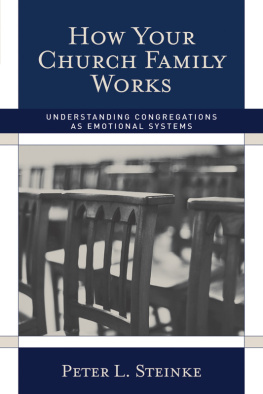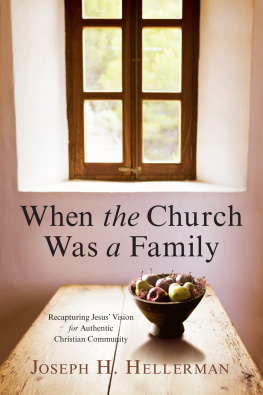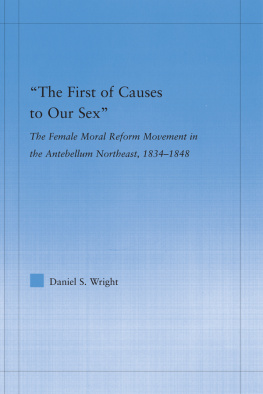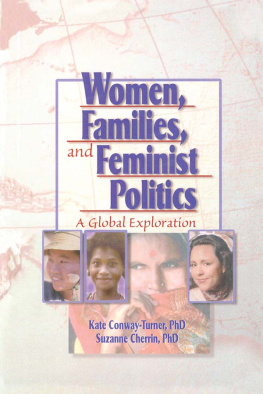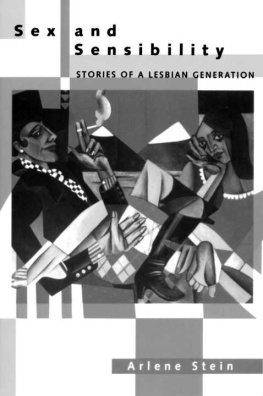1985 The University of North Carolina Press
All rights reserved
Manufactured in the United States of America
Library of Congress Cataloging in Publication Data
Friedman, Jean E.
The enclosed garden.
(The Fred W. Morrison series in Southern studies)
Bibliography: p.
Includes index.
1. WomenSouthern StatesSocial conditions.
2. FeminismSouthern StatesHistory19th century.
3. Social structureSouthern StatesHistory19th
century 4. WomenSouthern StatesReligious life
History19th century. I. Title. II. Series.
HQ1438.S65F75 1985 305.420975 84-25831
ISBN 0-8078-1644-2
ISBN 0-8078-4281-8 (pbk.)
94 93 92 91 90 6 5 4 3 2
THIS BOOK WAS DIGITALLY MANUFACTURED.
PREFACE
The Enclosed Garden is the authors search to understand the relationship between the nineteenth-century social structure and the lived experience of southern women. Intrigued by the excellent studies of antebellum northern women by Nancy Cott, Carroll Smith-Rosenberg, and Barbara Berg which suggest that modernization and its attendant sexual segregation prompted women to form independent womens networks that ultimately challenged the patriarchy, I used them as a point of departure. Those studies formulated the basic question of my own study, namely, why did the southern womens reform movement emerge only gradually in the late nineteenth century?
The early stages of my research led me to see the importance of community as a powerful factor in integrating southern womens identity and in preserving their traditional role. The structure of the evangelical community then became the object of study. But it was the point of intersection between community structure and womens psyche that compelled my interest. Gradually it became clear that only a multimethodological approach, one using anthropology, sociology, literary analysis, and psychology, as well as traditional historical methods, would be able to penetrate the layers of reality that have hidden southern womens historic identity. The result was a study of community and its effect on the role and identity of black and white women. But this means that no immediate answer to the original comparative question is at hand because this kind of multidimensional analysis for women of other regions is not presently available. The author hopes this study will challenge historians of women to analyze the problem of community structure and womens psychic response in order to make a comparative work possible.
Writers and scholars are paupers, dependent upon their friends and colleagues for advice and criticism. This list of acknowledgments attests to my own poverty. I am most indebted to Lester D. Stephens, department head, who generously gave his time to edit and criticize the raw first drafts. His patience, tact, and wisdom helped sort out the relevant and irrelevant, the worthy and unworthy. Paul C. Nagel, who believed in supporting the scholarship of the junior faculty, listened intently to my research plans and encouraged me by making available departmental grants. Lester Stephens did the same. In addition the University Patent Fund underwrote part of this research.
Tania Modleski, with enduring good humor and tough-mindedness, edited the later drafts, challenging and criticizing ideas and language. Very simply, her friendship and encouragement made this book possible. Nancy Fraser read the early manuscript, recognized its possibilities, and gave astute suggestions that greatly contributed to the richness of its themes. It was she who supported me through various writers cramps and crises. Emory Thomas always accepted my work with enthusiasm; he taught me that writing was exciting. Moreover, he defended the work even though he graciously disagreed with parts of it.
Everett Lee offered invaluable help in organizing the quantitative data. His willingness to teach and guide a neophyte was nothing short of inspiring. Susette Talarico patiently schooled me in data gathering and quantitative methods; the successes are hers, the mistakes, mine. Janice Powell, my assistant and consultant who programmed, coded, and clarified data went beyond what was expected of her.
Paul Freeman and Pattie Buice, Jungian analysts, helped considerably in shaping the third chapter. They cannot be held responsible, however, for my tendency to adopt literary and historical methodology rather than a consistent psychological one.
I would like to thank my readers who added their own special critical and editorial talents to the manuscript. They are Nancy Rubin, Fran Teague, Darlene Clarke Hine, Ellen Nolan, Lee Kennett, and Mary Gordon. To Carol Berkin, who read the final draft, and to Iris Hill and Sandra Eisdorfer, who did such superb editorial jobs, I owe a special debt of thanks.
Perhaps, in the order of things my thanks should first have been to Bill Shade, my old adviser, partner, and friend. By unceasing energy he stretched my concept of culture and loosened my imagination.
Many thanks to my hard-working assistants: Tom Richey, Melissa Tufts, Todd Butler, and Bebe Crosby.
The archivists, librarians, and curators of the collections I visited were most helpful and tireless in their efforts to make available pertinent material, and I am grateful to them.
Finally, much credit is due the secretaries who, in a pre-word-processor department, faithfully met the deadlines with accurate and good copy. They were outstanding not only for their efficiency but for their kindness. They are Kathy Coley, Ann Saye, Nancy Heaton, Janice Scarborough.
Note to the Paperback Edition:
Please note the addition of historical source material to the literary example on page 85 and the substitution of historical sources for reference to Mattie Griffiths Brownes novel on page 86. The changes strengthen the text.
INTRODUCTION
Why the southern womens reform movement emerged in the late nineteenth-century South is a question answered only by analyzing the subtle and complex roots of southern womens identity. Until the late 1870s southern culture inhibited the formation of womens consciousness, collective identity, and self-assertion and at the same time discouraged female association. Traditionally, historians have attributed the repression of feminism to the institution of slavery. The southern patriarchy, the argument went, demanded the subservience of all dependents including slaves, women, and children in order to retain autocratic power over the slave system. Any challenge to the patriarchy threatened slavery. Certainly, there is truth in this argument. But what social institution supported slavery and was especially threatened by its loss? The families who depended upon slavery for status and the accumulation of property defended the system. Thus southern families and the kinship connections that fostered the southern community need closer analysis if we are to understand the maintenance of traditional attitudes toward women.
The evangelical community, a church-directed, kin-dominated society, linked plantation, farm, and town in the predominantly rural South. As Frank Owsley and, more recently, Robert Kenzer have explained, the coming together of elite and farmer kinsmen and kinswomen in the churches made kin rather than class the principle determining element in social relationships. It would be a mistake to assume that this was the case only for rural society; in fact, kin values pervaded the towns and thus reinforced traditional obligations for urban women as well. However, in the South (as elsewhere) the phenomenon of urbanization was not primarily a movement away from kin ties to the impersonal city; rather, as the southern refugee pattern indicates, migration was part of a complex exchange movement between city and countryside during the war. In addition, recent works, such as Michael Andersons study of nineteenth-century Lancashire and George S. Rosenbergs and Donald F. Anspachs analysis of contemporary working-class families, show that urban families are sustained by kin connections.


